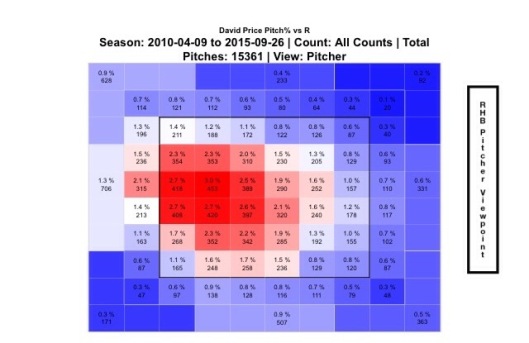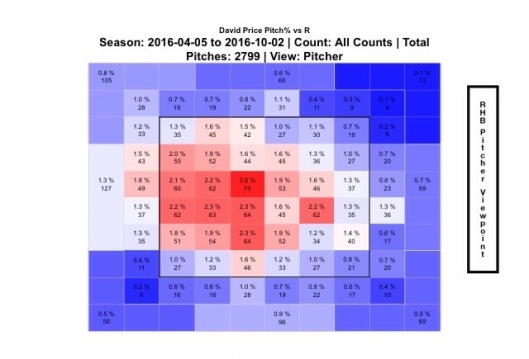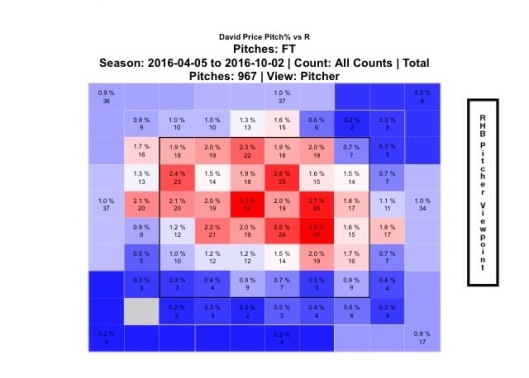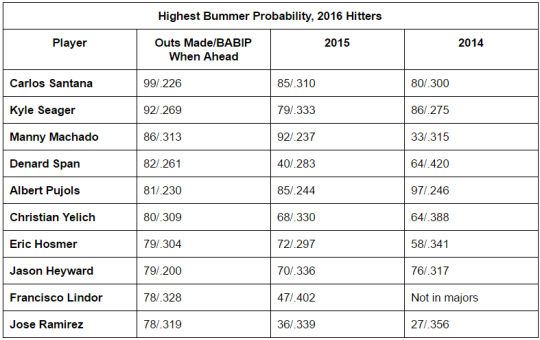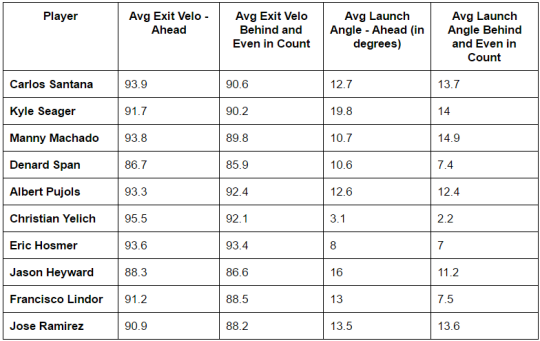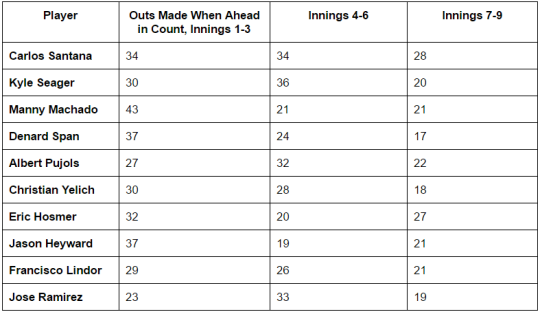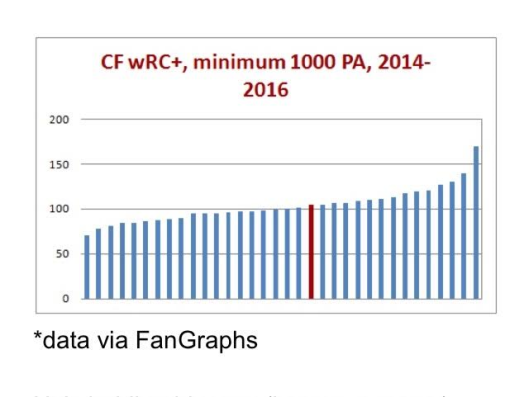In “Hardball Retrospective: Evaluating Scouting and Development Outcomes for the Modern-Era Franchises”, I placed every ballplayer in the modern era (from 1901-present) on their original team. I calculated revised standings for every season based entirely on the performance of each team’s “original” players. I discuss every team’s “original” players and seasons at length along with organizational performance with respect to the Amateur Draft (or First-Year Player Draft), amateur free agent signings and other methods of player acquisition. Season standings, WAR and Win Shares totals for the “original” teams are compared against the “actual” team results to assess each franchise’s scouting, development and general management skills.
Expanding on my research for the book, the following series of articles will reveal the teams with the biggest single-season difference in the WAR and Win Shares for the “Original” vs. “Actual” rosters for every Major League organization. “Hardball Retrospective” is available in digital format on Amazon, Barnes and Noble, GooglePlay, iTunes and KoboBooks. The paperback edition is available on Amazon, Barnes and Noble and CreateSpace. Supplemental Statistics, Charts and Graphs along with a discussion forum are offered at TuataraSoftware.com.
Don Daglow (Intellivision World Series Major League Baseball, Earl Weaver Baseball, Tony LaRussa Baseball) contributed the foreword for Hardball Retrospective. The foreword and preview of my book are accessible here.
Terminology
OWAR – Wins Above Replacement for players on “original” teams
OWS – Win Shares for players on “original” teams
OPW% – Pythagorean Won-Loss record for the “original” teams
AWAR – Wins Above Replacement for players on “actual” teams
AWS – Win Shares for players on “actual” teams
APW% – Pythagorean Won-Loss record for the “actual” teams
Assessment
The 2001 Texas Rangers
OWAR: 48.4 OWS: 278 OPW%: .513 (83-79)
AWAR: 34.2 AWS: 219 APW%: .451 (73-89)
WARdiff: 14.2 WSdiff: 59
The “Original” 2001 Rangers placed third in the American League West behind Seattle and Oakland. Sammy “Say It Ain’t” Sosa (.328/64/160) established personal bests in batting average, runs scored (146), RBI and bases on balls (116) while placing runner-up in the MVP balloting. Rich Aurilia (.324/37/97) contributed career-highs in nearly every batting classification including 114 tallies and 206 safeties. Juan “Igor” Gonzalez (.325/35/140) achieved his third All-Star invite and finished fifth in the American League MVP race. Ivan “Pudge” Rodriguez (.308/25/65) merited his tenth straight Gold Glove Award. Jose Hernandez swatted 26 two-baggers and 25 big-flies. The “Actuals” lineup featured Alex Rodriguez (.318/52/135) who paced the circuit in four-baggers and runs scored (133). Rafael Palmeiro (.273/47/123) surpassed the century mark in walks and equaled his single-season HR total. Frank Catalanotto batted at a .330 clip and ripped 31 two-base hits.
Ivan Rodriguez rated thirteenth among backstops according to “The New Bill James Historical Baseball Abstract” top 100 player rankings. “Original” Rangers registered in the “NBJHBA” top 100 ratings include Sammy Sosa (45th-RF), Juan Gonzalez (52nd-RF) and Ruben Sierra (70th-RF). Moreover, Alex Rodriguez (17th-SS), Rafael Palmeiro (19th-1B), Ken Caminiti (25th-3B) and Andres Galarraga (42nd-1B) achieved the distinction among members of the “Actuals” roster.
Original 2001 Rangers Actual 2001 Rangers
| STARTING LINEUP |
POS |
OWAR |
OWS |
STARTING LINEUP |
POS |
AWAR |
AWS |
| Rusty Greer |
LF |
-0.04 |
5.64 |
Frank Catalanotto |
LF |
2.19 |
16.86 |
| Mark Little |
CF |
0.39 |
2.69 |
Gabe Kapler |
CF |
0.85 |
12.52 |
| Sammy Sosa |
RF |
9.56 |
43.85 |
Ricky Ledee |
RF |
-0.48 |
2.21 |
| Juan Gonzalez |
DH/RF |
4.21 |
23.5 |
Ruben Sierra |
DH |
0.82 |
9.21 |
| Carlos Pena |
1B |
0.21 |
2.01 |
Rafael Palmeiro |
1B |
3.62 |
24.62 |
| Benji Gil |
2B/SS |
0.99 |
6.69 |
Randy Velarde |
2B |
1.57 |
8.75 |
| Rich Aurilia |
SS |
5.46 |
32.44 |
Alex Rodriguez |
SS |
8.2 |
34.67 |
| Mike Lamb |
3B |
-0.03 |
6.37 |
Mike Lamb |
3B |
-0.03 |
6.37 |
| Ivan Rodriguez |
C |
3.92 |
19.8 |
Ivan Rodriguez |
C |
3.92 |
19.8 |
| BENCH |
POS |
OWAR |
OWS |
BENCH |
POS |
AWAR |
AWS |
| Rey Sanchez |
SS |
2.37 |
13.45 |
Michael Young |
2B |
0.09 |
6.32 |
| Jose Hernandez |
SS |
2.7 |
12.63 |
Rusty Greer |
LF |
-0.04 |
5.64 |
| Ruben Sierra |
DH |
0.82 |
9.21 |
Bill Haselman |
C |
0.09 |
3.71 |
| Chad Kreuter |
C |
1.28 |
9.03 |
Ken Caminiti |
3B |
-0.07 |
3.66 |
| Dean Palmer |
DH |
0.14 |
4.53 |
Andres Galarraga |
DH |
-0.71 |
3.22 |
| Bill Haselman |
C |
0.09 |
3.71 |
Chad Curtis |
CF |
0.14 |
2.04 |
| Jeff Frye |
2B |
-0.45 |
3.61 |
Carlos Pena |
1B |
0.21 |
2.01 |
| Fernando Tatis |
3B |
-0.26 |
2.25 |
Doug Mirabelli |
C |
-0.09 |
1.31 |
| Ruben Mateo |
RF |
-0.61 |
1.31 |
Ruben Mateo |
RF |
-0.61 |
1.31 |
| Andy Barkett |
LF |
0.11 |
1.26 |
Scott Sheldon |
3B |
-0.56 |
0.89 |
| Kevin L. Brown |
C |
0.11 |
1.09 |
Bo Porter |
LF |
-0.18 |
0.77 |
| Craig Monroe |
RF |
0.03 |
0.61 |
Craig Monroe |
RF |
0.03 |
0.61 |
| Warren Morris |
2B |
-0.43 |
0.53 |
Mike Hubbard |
C |
0.06 |
0.41 |
| Cliff Brumbaugh |
RF |
-0.39 |
0.24 |
Marcus Jensen |
C |
-0.27 |
0.29 |
| Scott Podsednik |
LF |
-0.06 |
0.04 |
Chris Magruder |
LF |
-0.32 |
0.12 |
| Kelly Dransfeldt |
SS |
-0.03 |
0.04 |
Kelly Dransfeldt |
SS |
-0.03 |
0.04 |
|
|
|
|
Cliff Brumbaugh |
RF |
-0.16 |
0.02 |
Kevin J. Brown (10-4, 2.65) fashioned a 1.141 WHIP in an abbreviated season (19 starts). Robb Nen (3.01, 45 SV) struck out 93 batters in 77.2 innings and topped the circuit in saves. Jeff Zimmerman (2.40, 28 SV) was nearly unhittable out of the bullpen, producing a 0.897 WHIP.
Original 2001 Rangers Actual 2001 Rangers
| ROTATION |
POS |
OWAR |
OWS |
ROTATION |
POS |
AWAR |
AWS |
| Kevin J. Brown |
SP |
2.66 |
10.63 |
Doug Davis |
SP |
2.6 |
9.25 |
| Doug Davis |
SP |
2.6 |
9.25 |
Rick Helling |
SP |
1.67 |
8.01 |
| Jim Brower |
SP |
1.47 |
8.13 |
Darren Oliver |
SP |
-0.06 |
3.78 |
| Rick Helling |
SP |
1.67 |
8.01 |
Kenny Rogers |
SP |
-0.37 |
1.96 |
| Ryan Dempster |
SP |
0.53 |
7.65 |
Aaron Myette |
SP |
-0.79 |
0.19 |
| BULLPEN |
POS |
OWAR |
OWS |
BULLPEN |
POS |
AWAR |
AWS |
| Robb Nen |
RP |
1.3 |
13.82 |
Jeff Zimmerman |
RP |
3.13 |
13.09 |
| Jeff Zimmerman |
RP |
3.13 |
13.09 |
Mike Venafro |
RP |
0.24 |
4.77 |
| Danny Patterson |
RP |
1.29 |
6.66 |
Pat Mahomes |
RP |
-0.13 |
3.56 |
| Scott Stewart |
RP |
0.73 |
5.53 |
Juan Moreno |
RP |
0.44 |
3 |
| Mike Venafro |
RP |
0.24 |
4.77 |
Chris Michalak |
RP |
0.49 |
1.82 |
| Darren Oliver |
SP |
-0.06 |
3.78 |
Danny Kolb |
RP |
0.16 |
0.85 |
| Bobby Witt |
SP |
0.5 |
2.53 |
Jeff Brantley |
RP |
0.09 |
0.68 |
| Kenny Rogers |
SP |
-0.37 |
1.96 |
J. D. Smart |
RP |
-0.15 |
0.26 |
| Scott Eyre |
RP |
0.34 |
1.82 |
Mark Petkovsek |
RP |
-1.42 |
0.22 |
| Brian Bohanon |
SP |
0.11 |
1.78 |
Francisco Cordero |
RP |
0.06 |
0.1 |
| Joey Eischen |
RP |
0 |
1.27 |
Rob Bell |
SP |
-1.14 |
0.08 |
| Danny Kolb |
RP |
0.16 |
0.85 |
R. A. Dickey |
RP |
-0.17 |
0.01 |
| Luis Pineda |
RP |
-0.01 |
0.65 |
Kevin Foster |
RP |
-0.32 |
0.01 |
| Mark Petkovsek |
RP |
-1.42 |
0.22 |
Joaquin Benoit |
SP |
-0.2 |
0 |
| Billy Taylor |
RP |
0.01 |
0.1 |
Tim Crabtree |
RP |
-0.39 |
0 |
| R. A. Dickey |
RP |
-0.17 |
0.01 |
Justin Duchscherer |
SP |
-0.8 |
0 |
| Joaquin Benoit |
SP |
-0.2 |
0 |
Ryan Glynn |
SP |
-0.51 |
0 |
| Ryan Glynn |
SP |
-0.51 |
0 |
Jonathan Johnson |
RP |
-0.44 |
0 |
| Jonathan Johnson |
RP |
-0.44 |
0 |
Mike Judd |
SP |
-0.33 |
0 |
| Brandon Knight |
RP |
-0.54 |
0 |
Brandon Villafuerte |
RP |
-0.51 |
0 |
| Matt Whiteside |
RP |
-0.61 |
0 |
|
|
|
|
Notable Transactions
Sammy Sosa
July 29, 1989: Traded by the Texas Rangers with Wilson Alvarez and Scott Fletcher to the Chicago White Sox for Harold Baines and Fred Manrique.
March 30, 1992: Traded by the Chicago White Sox with Ken Patterson to the Chicago Cubs for George Bell.
Rich Aurilia
December 22, 1994: Traded by the Texas Rangers with Desi Wilson to the San Francisco Giants for John Burkett.
Juan Gonzalez
November 2, 1999: Traded by the Texas Rangers with Danny Patterson and Gregg Zaun to the Detroit Tigers for Alan Webb (minors), Frank Catalanotto, Francisco Cordero, Bill Haselman, Gabe Kapler and Justin Thompson.
November 1, 2000: Granted Free Agency.
January 9, 2001: Signed as a Free Agent with the Cleveland Indians.
Robb Nen
July 17, 1993: Traded by the Texas Rangers with Kurt Miller to the Florida Marlins for Cris Carpenter.
November 18, 1997: Traded by the Florida Marlins to the San Francisco Giants for Mick Pageler (minors), Mike Villano (minors) and Joe Fontenot.
Rey Sanchez
January 3, 1990: Traded by the Texas Rangers to the Chicago Cubs for Bryan House (minors).
August 16, 1997: Traded by the Chicago Cubs to the New York Yankees for Frisco Parotte (minors).
November 3, 1997: Granted Free Agency.
January 22, 1998: Signed as a Free Agent with the San Francisco Giants.
November 5, 1998: Granted Free Agency.
December 11, 1998: Signed as a Free Agent with the Kansas City Royals.
October 29, 1999: Granted Free Agency.
December 7, 1999: Signed as a Free Agent with the Kansas City Royals.
Jose Hernandez
April 3, 1992: Selected off waivers by the Cleveland Indians from the Texas Rangers.
June 1, 1993: Traded by the Cleveland Indians to the Chicago Cubs for Heathcliff Slocumb.
July 31, 1999: Traded by the Chicago Cubs with Terry Mulholland to the Atlanta Braves for a player to be named later, Micah Bowie and Ruben Quevedo. The Atlanta Braves sent Joey Nation (August 24, 1999) to the Chicago Cubs to complete the trade.
November 5, 1999: Granted Free Agency.
December 16, 1999: Signed as a Free Agent with the Milwaukee Brewers.
Kevin J. Brown
October 15, 1994: Granted Free Agency.
April 9, 1995: Signed as a Free Agent with the Baltimore Orioles.
November 3, 1995: Granted Free Agency.
December 22, 1995: Signed as a Free Agent with the Florida Marlins.
December 15, 1997: Traded by the Florida Marlins to the San Diego Padres for Steve Hoff (minors), Derrek Lee and Rafael Medina.
October 26, 1998: Granted Free Agency.
December 12, 1998: Signed as a Free Agent with the Los Angeles Dodgers.
Honorable Mention
The 2007 Texas Rangers
OWAR: 36.9 OWS: 249 OPW%: .496 (80-82)
AWAR: 27.8 AWS: 225 APW%: .463 (75-87)
WARdiff: 9.1 WSdiff: 24
Texas finished a distant sixteen games behind Seattle in ’07. Carlos Pena (.282/46/121) registered 99 tallies and achieved personal-bests in virtually every offensive category. Mark Teixeira tagged 30 long balls, drove in 105 baserunners and contributed a .306 BA. Ian Kinsler swiped 23 bases in 25 attempts, scored 96 runs and clubbed 20 dingers during his sophomore season. Travis “Pronk” Hafner blasted 24 dingers and eclipsed the century mark in RBI for the fourth consecutive campaign. Ivan Rodriguez drilled 31 two-base hits while third-sacker Edwin Encarnacion delivered a .289 BA with 16 jacks. Aaron Harang (16-6, 3.73) posted a career-best 1.144 WHIP and placed fourth in the Cy Young balloting. Joaquin Benoit whiffed 87 batsmen over 82 innings while furnishing a 2.85 ERA along with a WHIP of 1.171.
On Deck
What Might Have Been – The “Original” 2003 Indians
References and Resources
Baseball America – Executive Database
Baseball-Reference
James, Bill. The New Bill James Historical Baseball Abstract. New York, NY.: The Free Press, 2001. Print.
James, Bill, with Jim Henzler. Win Shares. Morton Grove, Ill.: STATS, 2002. Print.
Retrosheet – Transactions Database
The information used here was obtained free of charge from and is copyrighted by Retrosheet. Interested parties may contact Retrosheet at “www.retrosheet.org”.
Seamheads – Baseball Gauge
Sean Lahman Baseball Archive


